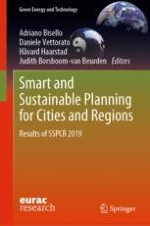2021 | OriginalPaper | Chapter
Investigating the Role of Occupant Behavior in Design Energy Poverty Strategies. Insights from Energy Simulation Results
Authors : Angela Santangelo, Simona Tondelli, Da Yan
Published in: Smart and Sustainable Planning for Cities and Regions
Publisher: Springer International Publishing
Activate our intelligent search to find suitable subject content or patents.
Select sections of text to find matching patents with Artificial Intelligence. powered by
Select sections of text to find additional relevant content using AI-assisted search. powered by
